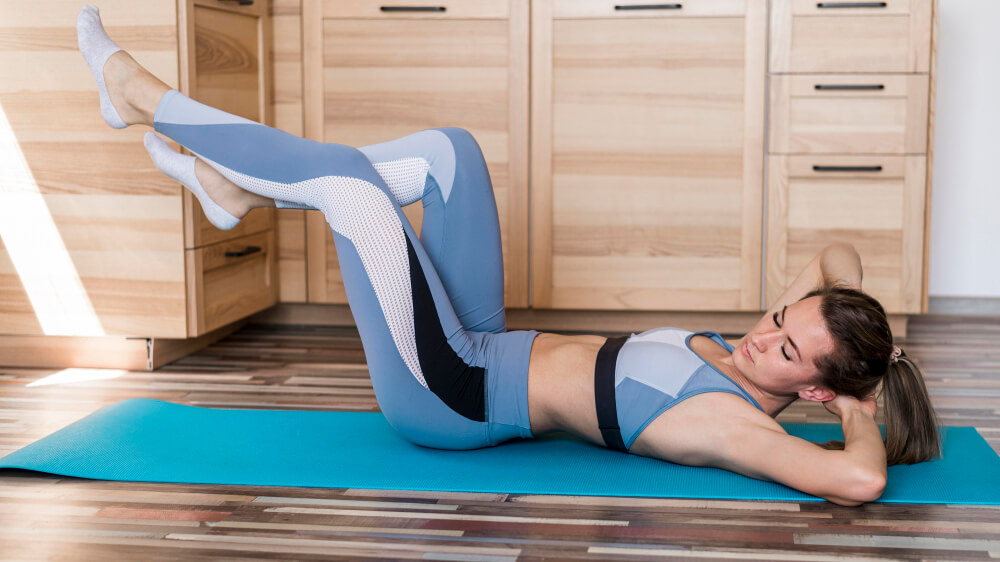Gluteus Medius is a muscle located at the upper and side part of your bottom. Conducting a gluteus Medius stretch can prevent many injuries and alleviate pain in the hips, knees and lower back. Unfortunately, we all tend to overlook this muscle, which is responsible for numerous movement processes happening in our body.
However, if you take enough time to stretch the gluteus Medius, you will experience multiple benefits while preventing chronic pain and limited motion. Now, let’s discuss the best ways to stretch this muscle and experience life without discomfort.
Gluteus Medius stretches – options
Warm-up
Even before you attempt to stretch your muscles, it’s incredibly important to warm them up, especially if they are stiff. Warming-up sessions will depend on you and how hard you can push your body through. You may alternate between low-intensity and dynamic exercises. Some warmup ideas may include jumping jacks, walking or running. Consider stretching after a hot shower when your muscles are loose and relaxed.
Cross-legged glute stretch
This is one simple exercise, and to do it properly, you need to:
Sit on the ground and cross your legs. Tuck your left foot into your right thigh. Make sure that your right leg is placed in front of your left shin. Lean slightly over your stretched legs. It is recommended to keep this position for at least 30 seconds.
It can be uncomfortable for some, but it’s highly beneficial, especially when stretching the gluteus Medius. Repeat the same process, but now switch your legs and tuck your right foot into your left thigh. If you want to push your limits, you can deepen this stretch by lowering your body towards your legs. For a bit easier stretch, don’t lower as much.
Z-sit
If you ever tried a pigeon pose, you know that z-sit is similar to this one. While a pigeon pose can cause much discomfort, z-sit is more comfortable and provides the same results.
You can start z-sit by sitting on the ground and making sure you are always comfortable. Otherwise, this stretch won’t be as pleasing as you hoped.
Place your left leg in a 90-degree position in front of your body. Do the same thing with your left leg but towards the back of your body. You can either try to sit upright or lean your torso towards your front leg.
You should keep this pose for 30 seconds and then switch your leg.
Elevated pigeon stretch
As previously mentioned, a pigeon stretch can be demanding and sometimes painful, but still an excellent hip opener. If you are into yoga, then you are familiar with this pose. Elevated pigeon stretching means getting it off the ground for a more demanding stretch.
You will need an elevated surface, like a table, bench, or box for this one. Lower your leg onto the surface. Your heel should be placed on your opposite hip. Step back with your planted leg and lean your weight forward. Once you feel the stretch, pause. Hold this position for about ten seconds and repeat this stretch ten times.
Figure 4 Stretch
You can explore so many options with this one, making it a perfect stretch for gluteus Medius. You can start by sitting upright, with your spine in a neutral position. Cross your right leg over your left one. Rest one hand on your ankle and another over your knee. Lean your torso and make sure you are comfortable.
You should hold this position for five breaths. Once done, return to the starting position and repeat on the other side. If you want to try something else, you can do this exercise lying down. Place your foot on the wall to make this pose a bit easier. While doing this, lean toward the wall as much as possible until your hips are placed directly over your knees. To challenge your balance, try standing.

Gluteus Medius stretches – why is it so important?
A desk-bound lifestyle is the main reason for weak glutes. Unfortunately, this type of practice tends to leave a mark on our hips and knees. By stretching your glutes, you are developing stronger glute muscles, but not only that, you are:
- Alleviating tension and tightness
- Improving motion and flexibility
- Saving your muscles from future tears and wears
- Improving posture
- Delaying fatigue on the glute muscles
